The Dyatlov Pass Incident, Trepanation and Cheeseburger Ice Cream
What happened to the nine Russian hikers who died more than 60 years ago? Why do some people poke a hole in their skull? Would you eat pickle cotton candy?
Well well well, if it isn’t almost fall? As opposed to everyone in my Instagram feed, I am not an autumn slut. PSL, infinity scarves and flannel blankets have very little appeal to me. In true Leo fashion, I am undeniably a summer person, and I’ll take a heatwave over a chilly October morning anytime. Fuck your Christan girl autumn. I mean it. Alas, I live in Montreal, where summer lasts two months, and it’s almost time to say goodbye to afternoon Dairy Queen slushies.
At least I’ll have you guys to keep me warm this winter <3
Alright, enough chit-chat. Let’s dive in because we have another loooooong post today!
The Dyatlov Pass Incident, or Why Ski Is a Very Dangerous Sport
I first heard about the Dyatlov Pass Incident in 2016, when I had a literature segment on a small TV show called L’étrange programme; on that particular day, our musical columnist, Alexandre Duguay, presented a small selection of albums inspired by mysterious real events. I was immediately drawn to the melody of Russian atmospheric metal band Kauan and their amazing concept album Sorni Nai, that perfectly encapsulates the horror of the tragedy that unfolded in 1959.
I think everyone, even sceptics, has a favourite paranormal event, one inexplicable “true story” that comes back to haunt them once in a while.
This is mine (duh duh duuuuh!!!)
Psst… The following retelling of the Dyatlov Pass Incident is based on an article I wrote with my friend Annaëlle Winand in 2019.
A lot of bad shit can happen during ski trips. Like snow storms, frostbites, sprained ankles, and other things I don’t know about because I have never skied in my life. But when a team of seasoned skiers set out to conquer the Ural Mountains in Russia sixty-five years ago, they were ready to overcome these challenges and more.
Unfortunately, nothing could prepare them for what was to come.
In the winter of 1959, at the height of the Cold War, Igor Dyatlov, a 23-year-old engineering student, led a group of ten skiers for a “little” ten-kilometre expedition. The team was made up of eight men and two women aged 20 to 37, all experienced hikers who, upon their return, would receive certification attesting to their competence. On the day of their departure, January 27, the snow and the cold were expected to make the trip particularly challenging.

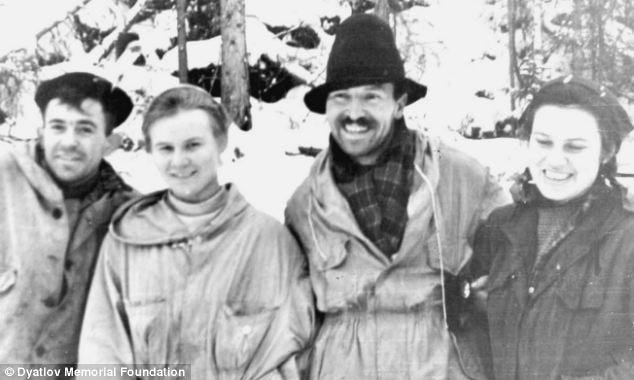
When they failed to show on February 12, their expected date of return, no one was alarmed. After all, delays were not uncommon for this type of unpredictable expedition. It was not until February 20 that a relief operation was launched. Six days later, the group’s tent was found on a pass, empty, torn down and buried in snow. It appeared that the trekkers had cut it open from the inside in order to get out. The discovery raised two questions: what prompted them to leave, and what stopped them from doing so through the front exit?
About two kilometres away from the camp, at the edge of a forest, the rescue team found the remains of a campfire and the corpses of Yuri Alexeyevich Krivonischenko and Yuri Nikolayevich Doroshenko. The two young men were in their underwear and had no shoes on. Broken branches suggested that one of them had climbed a tree, possibly in the hope of spotting the tent. The bodies of Dyatlov, Zinaida Alekseevna Kolmogorova and Rustem Vladimirovich Slobodint were found at respectively 300, 480 and 620 metres from the tree. They had died of hypothermia, but an examination of Slobodin's skull showed a fracture of unknown source.
The other bodies were discovered in a ravine in May. The remaining students were dressed more warmly than the others, even if their clothing raised some questions: Semyon Alekseevich Zolotaryov wore Lyudmila Alexandrovna Dubinina’s coat, whose foot was wrapped in a piece of fabric torn from Krivonischenko's pants. The autopsy revealed that Zolotaryov, Dubinia and Nicolai Thibeaux-Brignolles had suffered fatal chest fractures which left no external marks. The medical examiner, who had a flair for drama, maintained that the pressure had been so strong that no human could be responsible for it. As for Dubinia, she was missing her tongue, eyes and a fragment of skull, as well as bits of lips and face skin; there were also severe lacerations on her hands. Many believe that these mutilations were due to decomposition, but the presence of clotted blood in her stomach suggests that she was alive when her tongue was torn out.
So what happened? When it comes to the Dyatlov Pass Incident and unsolved mysteries in general, theories and rumours abound, making it difficult to sort out the true from the false. Given the fact that it happened in Russia during the Cold War, this story is basically a conspiracist’s wet dream—the original tin foil kind, not the QAnon loonies. When Annaëlle and I published our article on Horreur Québec, a reader left a series of comments that must have accounted for 1,000 words each. It didn’t make much sense and we thought it was funny, but you could tell that he was taking that shit really seriously.

We don’t know what terrified the skiers to the point of tearing up their tents and walking out half-naked in the cold. Nor do we know what broke their chests. Some believe that Dyatlov and his team were the victims of a mysterious secret weapon tested by the Soviet Army, a theory supported by the testimonies of several individuals who reported seeing luminous spheres in the area at the time of the accidents. These spheres might even have been photographed by the group. Furthermore, the clothes worn by Krivonischenko were reportedly tested with radiation—ranging from trace to very high levels, depending on who you ask.
The presence of Semyon Alekseevich Zolotaryov in the group raised a few eyebrows. By far the oldest member of the party (February 2, the day of his death, marked his thirty-eighth birthday), he had earned four honours for his service during World War II and joined Dyatlov under an alias (Sasha) at the last minute. Oh, and he had tattoos, something that was rather unusual at the time. Dyatlovpass.com reports that he had multiple tattoos including one depicting a “beets-heart-fire” (??), which sounds very Russian. Anyway, some believe he and his companions were eliminated by the KGB. I know that Hollywood likes to portray KGB executions as extremely spectacular, but why would they leave such a mysterious crime scene? And why kill those guys anyway?
As for cryptozoologists and paranormal enthusiasts, many believe in the attack of a monstrous creature similar to the Yeti, or even a Menk—a spirit of the forest from the folklore of the Khantys, an indigenous people of Russia.
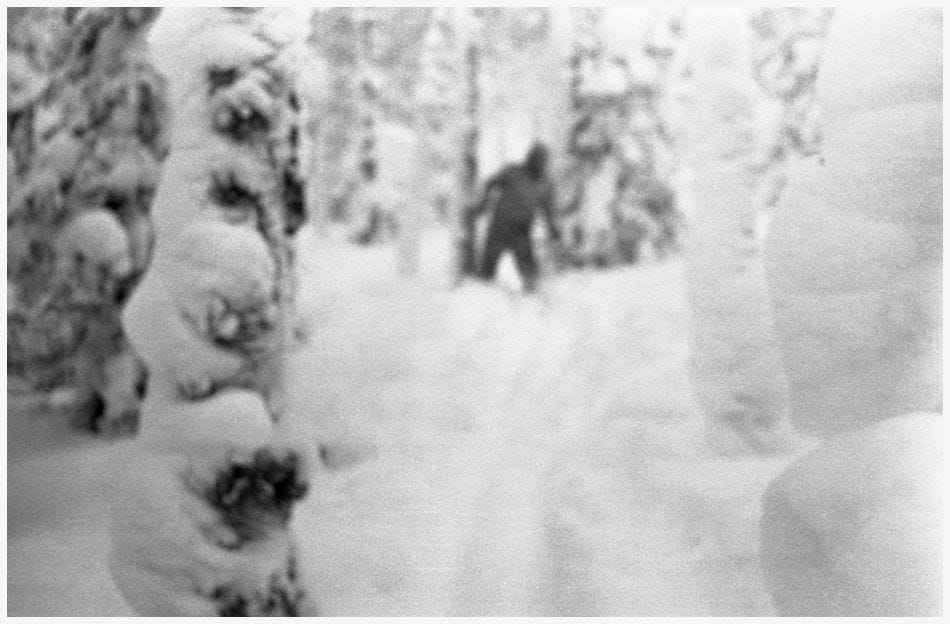
Others think that an avalanche would be responsible, a theory often rebutted because, according to the rumour, neither the terrain nor the circumstances were conducive to such a disaster, and no sign of it was recorded. Moreover, the corpses were only covered with a thin layer of snow. Another natural hypothesis blames a Kármán vortex street, whose infrasound would have destabilized the hikers’ mental equilibrium and caused physical discomfort. They would have left their camp in panic and, once calmed down, would not have managed to regain it. I read the Kármán vortex street Wikipedia page three times and still have no idea what the hell it is, so head this way if you think you’re smarter than me.
In 2020, an official inquiry ruled that the students had indeed died in an avalanche, an explanation that seems more and more likely as new researches shed light on the mystery. A research published in 2021 in the journal Communications Earth and Environment suggests that “a combination of factors— including a cut made into the snow when the trekkers pitched their tent and a build-up of snow by strong, icy winds—triggered a delayed avalanche that drove the students outside into temperatures of -25 degrees Celsius (-13 Fahrenheit).” The paper was penned by Alexander Puzrin, a professor of geotechnical engineering at ETH Zurich, and Johan Gaume of the Snow and Avalanche Simulation Laboratory at the École Polytechnique Fédérale de Lausanne. The pair went on to explore the Dyatlov Pass on three occasions, later publishing the first record of a slab avalanche in the area, along with a 3-D map taken by drone.
It sounds legit, but it was refuted by both the director of the U.S. Forest Service’s National Avalanche Center and the director of the Gallatin National Forest Avalanche Center in Montana. Even the lady who runs dyatlovpass.com disagrees! So who are we to believe? Will we ever find the truth? Do we even want to find the truth?
Unless it proves the existence of aliens or the Yeti, I guess the answer is… no, not really!
There's a Hole in My Skull That’s Supposed to Make Me Smarter
(Please read the title above to the tune of Hole in My Soul by Aerosmith)
Trepanation is a surgical procedure that involves drilling a hole in the cranial box. An essential step in certain brain surgery, it used to be viewed as therapeutic in itself. Try to guess for how long humans have been drilling holes into their skulls. Ready? HAH! YOU’RE WRONG. The first trepanned skulls found in North Africa date back nearly 10,000 years. Can you imagine getting brain surgery 10,000 years ago?
It is among the ancient civilizations of the Andes that the most examples have been found. While some scientists associate trepanation with religious rituals, it is also the oldest surgical procedure known to humanity. In severe head injuries, drilling a hole in the skull could serve to drain a blood clot or reduce pressure caused by swelling in the brain.
Sounds like a straight road to certain death, but “the usual estimates for survival of different samples of trephined skulls range from 50 percent to 90 percent with most estimates on the higher side”. How did they do it? In some cases, they made rectangular intersecting cuts with hard stone knives; in others, they scraped the skull with a flint. Other methods included 1- cutting a circular groove and then lifting off the disc 2- using a circular trephine 3- drilling a circle of closely spaced holes and then cutting the bone between them. Pick a trepanation method and I’ll reveal which Disney princess matches your energy!
In Ancient Greece, it was advocated by Hippocratic doctors as a way to allow stagnant blood to flow out before it spoiled and turned into pus. Until the beginning of the 19th century, Western doctors were big fans despite the procedure’s high mortality rate caused by infection. They used it to treat head injury, epilepsy and mental illness.
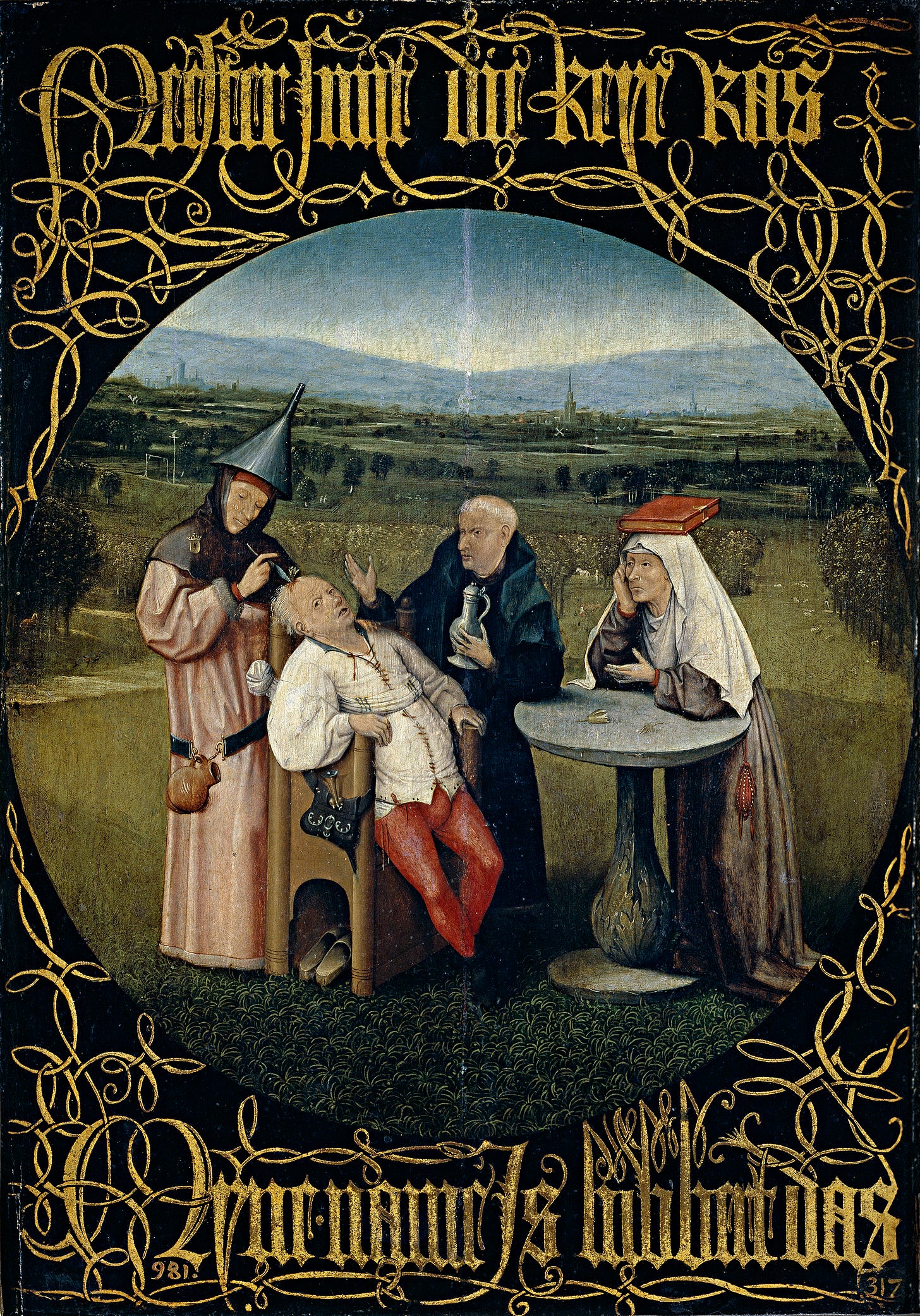
Trepanation vs Lobotomy
The difference between trepanation and lobotomy is that the latter is “performed in order to sever nerve fibres in the brain that connect the frontal lobe—the area of the brain responsible for thinking—with other brain regions”. Developed by António Egas Moniz, who received the Nobel prize for it in 1949, lobotomy was at its most popular between the 1930s and 1950s, when it was used to “treat” an array of mental health disorders and intellectual disabilities, address the issue of overcrowding in mental hospitals and silence women who made too much noise. According to doctors and nurses, “the personality changes exhibited by patients [ranged] from (…) docility and infantility to apathy and lethargy”.
Lobotomies in psychiatry are a thing of the past, but skull holes haven’t disappeared entirely. In the words of Anna Mehler Paparny, here quoted from her excellent book Hello I Want to Die Please Fix Me, “if you try everything and nothing works—not neurotransmitter reuptake inhibitors, monoamine oxidase inhibitors, mood stabilizers, anticonvulsants, antipsychotics, psychotherapy, repetitive transcranial magnetic stimulation or electroconvulsive therapy—you might qualify for what is called an anterior cingulotomy.” This neurosurgical procedure targets the dorsal anterior cingulate cortex, the network associated with depression, in order to “[toast] two spheres of brain tissue about a centimetre in diameter”.
Unfortunately, the only way to know if cingulotomy will alleviate your depression is to try it.
Goop meets Timothy Leary meets Dr. Frankenstein
In the modern age, there are rich hippies that believe that trepanation holds the key to enlightenment and enhanced consciousness. They say that it restores the full pulse pressure of the heartbeat, bringing us back to a childlike state… or something. I dunno. Ask Amanda Feilding, who carved a hole in her own skull with a dental drill in 1970 (I looked it up and she’s an Aquarius! duh!). The founder of the Foundation to Further Consciousness, later renamed to the Beckley Foundation, Feilding maintains that the procedure made her happier and healthier. Gwyneth Paltrow hasn’t ventured this far in her quest for happiness, but one can dream.
You could also ask her ex-partner, Joseph Mellen, who wrote a book titled Bore Hole about his attempts at self-trepanation—but don’t worry, he’s fully trepanned now! The operation was utlimately carried out successfully and he’s been permanently high since. Far out, man.
The couple was taught about the procedure by Bart Huges, a Dutch librarian, psychedelic explorer and failed med student who self-trepanated (?!?) in 1965. The year before, he had published a scroll (literally a scroll) to explain his belief that drilling a hole in the skull would increase the ratio of blood to cerebrospinal fluid in the head, incidentally increasing mental energy.
If I may, I just want to add that Huges named his daughter Maria Juana, and that Feilding and Mellen have two sons named Rock Basil and Cosmo Birdie. Just thought you should know.

Inspired? Disgusted? Call me straight edge but, personally, I need a trepanation as much as I need a hole in my head.
Weird Food for Extreme Munchies
While the merits of trepanation remain unproven, I can say for sure that you’ll be hungry after all that blood loss. And if the procedure really expands your mind, you might be in the mood for something more adventurous than, say, dehydrated ramen noodles. Enter the weird and wonderful culinary creations of the Canadian National Exhibition.
I’ll be honest, I had never heard about the CNE before, and I’m still not entirely sure what purpose it serves. But after researching the previous two topics, I was running low on energy and looking for something fun and light to talk about, and this showed up in my feed. So here we are ¯\_(ツ)_/¯
The organization’s website describes it as “Canada’s largest community event and one of the top agricultural fairs in North America”; its mission is “to enrich our community by celebrating the past, showcasing the present, promoting the future”.
They have over 210,000 likes on Facebook, so I guess it’s kind of a big deal? Torontonians, is the CNE a big deal? Whether it is or not, it sure ain’t your mama’s agricultural fair. Instead of fair staples like chicken eggs and, I don’t know, potatoes and banana bread (?), the vendors serve wild shit like four-pound tacos and street-corn lemonade.
Although I was never pregnant enough to crave fruity pebble cheese curds, and despite the fact that simply reading the words “quarter-pound cheese-stuffed Doritos” is enough to give me explosive diarrhea, some items on the menu caught my intention.
Fried frog legs, for example. Maybe I haven’t travelled across the country enough and I’m talking bullshit, but I think that frog legs are a thing that most Canadians outside of Quebec have never tried. Even here, it’s not really something that we cook, but rather something that we enjoy submerged in garlic butter swamps at Chinese buffets and pseudo-Greek chain restaurants. To me, the taste is nostalgic; it reminds me of those Mother’s Day dinners where I would devour mountains of thicc and juicy amphibian thighs to impress my dad and my uncles—much to the despair of my poor maman.
I would also try the churro s’mores, the butter chicken overload (a sandwich drizzled with tandoori aioli and served between two butter chicken samosas) and the cookie-stuffed chimney cones. And since I’m a pickle slut, I would sample the pickle fries (yummy) and the pickle cotton candy (sounds horrid but still).
I guess I’ll have to attend the fair next year!
Well, fuck me. Now I’m hungry and the fridge is empty. Thank you, Canadian National Exhibition.
Random Stuff
Since People Who Eat Darkness was the first true crime book of quality that I read, Lucie Blackman’s story stayed with me. Released in late July, Missing: The Lucy Blackman Case is an okay documentary that follows the classic, kinda boring Netflix guideline that has come to define this era’s true crime, but it leaves a lot of details out. The book is better!
I don’t know what rabbit hole I was following to land on this article, but here: 11 Seriously Weird Facts About Jesus's Foreskin.
How many people are in space right now? This website answers this simple question.
On HBO/Crave since August 13, Telemarketers is a wild ride featuring two aspiring documentary makers on a mission to take down a telemarketing company in Bush’s America. It’s got crooks, fuck-ups, heroin, puppy sales, corrupted cops, death metal band Mortician and the friendliest cast of characters you can imagine, including instant legend and “freelance journalist” Pat Pespas.
Bees can count, grasp concepts of sameness and difference, learn complex tasks by observing others, and know their own individual body dimensions. They also appear to feel joy and pain—a revelation that has wide-ranging ethical implications. Bonus: the article contains pictures of bees playing ball!
A Florida man was arrested after trying to cross the Atlantic in a hamster wheel vessel. After being intercepted, he refused to step off the vessel, threatened to kill himself and claimed that he had a bomb on board. It took three days to get him out.
Elon Musk gets a lot of hate, but it’s not enough. He sucks even more than I thought. A brilliant piece by Ronan Farrow for The New Yorker.
Also, in case you didn’t know, we learned last week that Elon and Grimes’s kids, X AE A-XII and Exa Dark Sideræl, welcomed a little brother named Techno Mechanicus last year. Lol.
Bonus: GWAR’s Berserker Blóthar thinks that Elon Musk would be a fitting name for dog anal glands. Enjoy.
Archaeologists in Poland have unearthed the 400-year-old skeleton of a young child buried face-down with an iron padlock on its foot—seemingly to stop its rising from the dead.
I deserve a lynching for this, but I had forgotten about beloved blog The Hairpin, a wonderful piece of Internet that ceased publication in 2018. I was reminded of its existence while browsing former collaborator Anne Helen Petersen’s very very good Substack, Culture Study. Read her essay on Bama RushTok.
Also: an excerpt from Petersen's book about how Kim Kardashian pushed the boundaries of celebrity pregnancy.
What’s on my wishlist: friend socks that hold hands and Nighshift, a stripper game by Exotic Cancer that should be released on Kickstarter soon!
I would also love this very expensive pajama set with detachable feathers—in pink, please.
Over the past months, writing Discontent Alien has become my main hobby. I’m having a lot of fun with this project and I’m always stoked when readers reach out. Sure, I don’t have a ton of readers (far from it!), but I have really awesome ones.
If you enjoy my content, consider liking it, sharing it and subscribing to it. It will make my day.
Ciao for now, jersey cow!





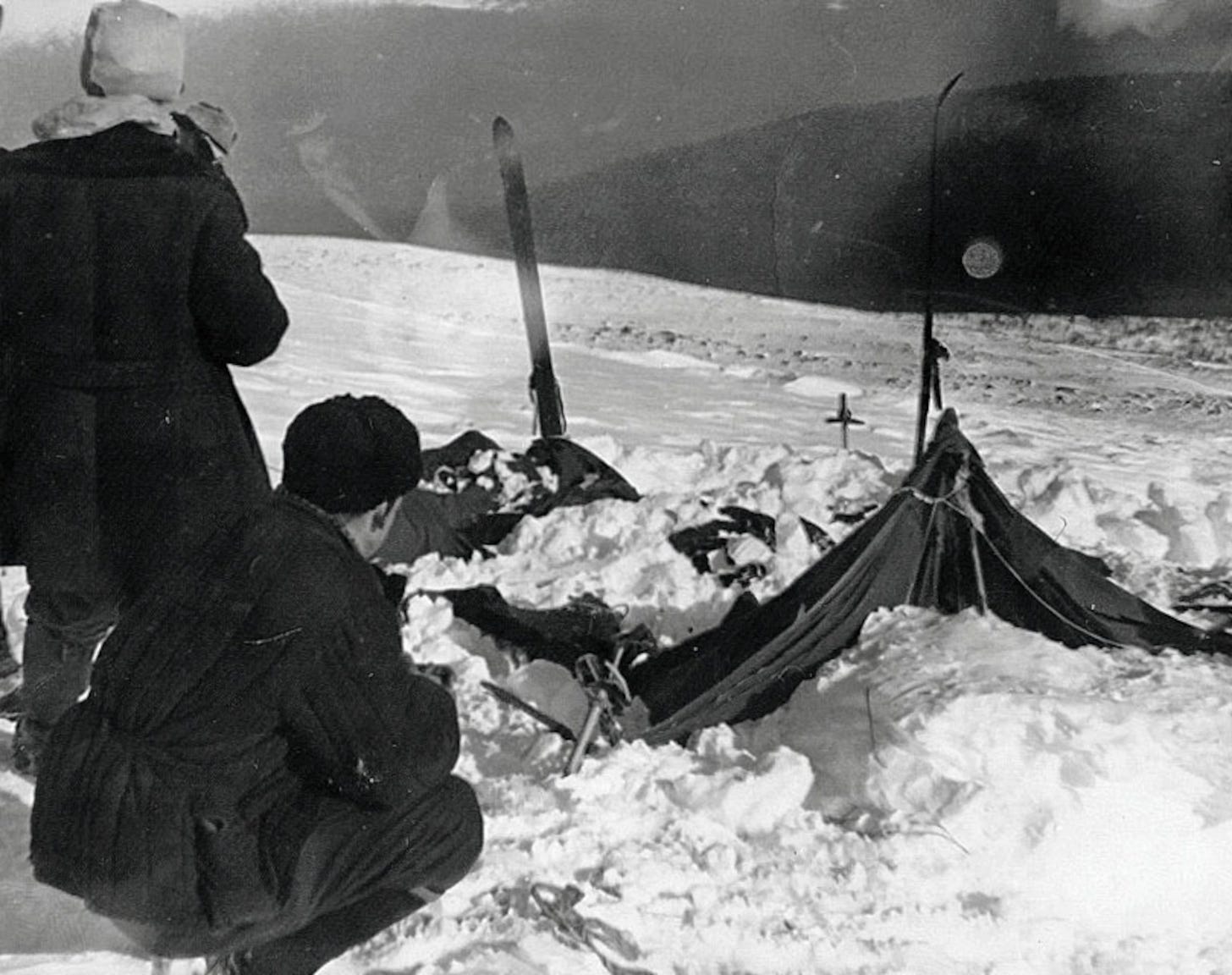





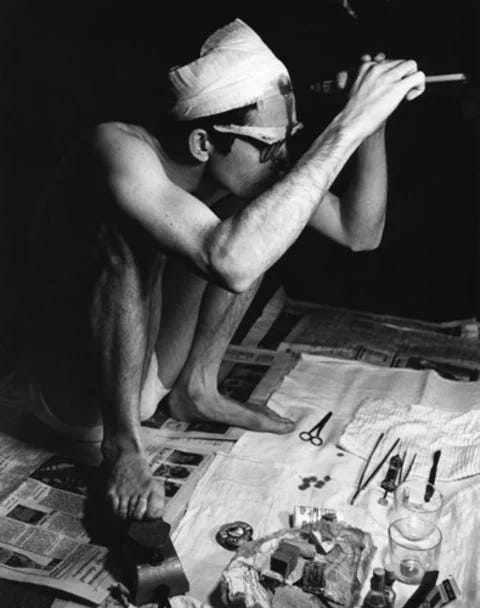

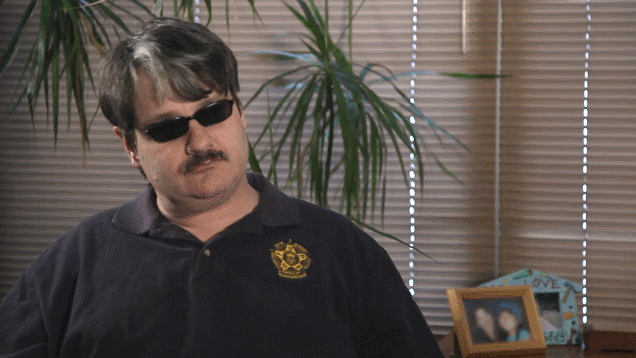

The CNE isn't a big deal, it's more like a thing you get dragged to by your friends who are either kind of corny or are new to the city and thus don't know that, aside from the prospect of trying out weirdo Frankenstein food, the Exhibition is pretty boring. And even the Frankenstein food part can be pretty disappointing. There are so many choices it's overwhelming. You tend to spend an hour walking around aimlessly in the food court, and when you finally choose and purchase your meal you can't help but feel slightly disappointed, can't silence the nagging thought that you could've gotten something better. The better agricultural fair happens during October in Markham—a small-town-turned-city at the edge of the GTA which, at the south side, is populated by nouveau-riche Chinese folks who drive luxury sportscars in quiet suburban neighborhoods and Tamil kids with blowouts, Jordans and 90% GPAs and which, at the north side, is filled with white folks who seem perturbed by the rising levels of melanin in their city. The Markham Fair is legit. I live on the south border and like to venture up north while wearing my Schott leather jacket and thrifted floral blouse and sit in on an demonstration watched largely by farmers about how best to feed your cattle. I love the stench of manure and the sight of country authenticity. yee-haw.
Anna Mehler Paparny rules. I took a class back in 2019 where we read her book and she came in one day to answer our questions. (She was friends with my prof, who had worked with her at the Globe and Mail). It was a very surreal experience, there wasn't a single person in the room who wasn't crying. I've never experienced collective catharsis like that before.